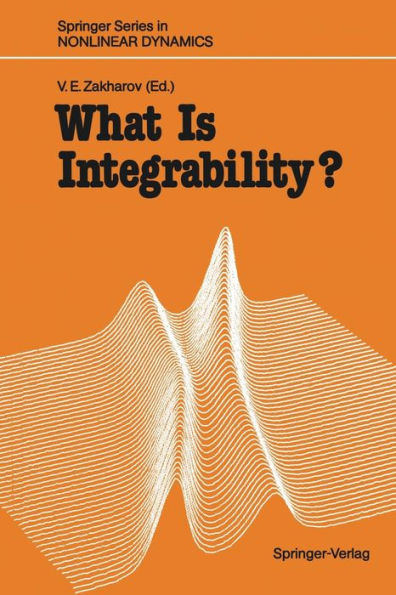What Is Integrability?
The idea of devoting a complete book to this topic was born at one of the Workshops on Nonlinear and Turbulent Processes in Physics taking place reg ularly in Kiev. With the exception of E. D. Siggia and N. Ercolani, all authors of this volume were participants at the third of these workshops. All of them were acquainted with each other and with each other's work. Yet it seemed to be somewhat of a discovery that all of them were and are trying to understand the same problem - the problem of integrability of dynamical systems, primarily Hamiltonian ones with an infinite number of degrees of freedom. No doubt that they (or to be more exact, we) were led to this by the logical process of scientific evolution which often leads to independent, almost simultaneous discoveries. Integrable, or, more accurately, exactly solvable equations are essential to theoretical and mathematical physics. One could say that they constitute the "mathematical nucleus" of theoretical physics whose goal is to describe real clas sical or quantum systems. For example, the kinetic gas theory may be considered to be a theory of a system which is trivially integrable: the system of classical noninteracting particles. One of the main tasks of quantum electrodynamics is the development of a theory of an integrable perturbed quantum system, namely, noninteracting electromagnetic and electron-positron fields.
"1111730587"
What Is Integrability?
The idea of devoting a complete book to this topic was born at one of the Workshops on Nonlinear and Turbulent Processes in Physics taking place reg ularly in Kiev. With the exception of E. D. Siggia and N. Ercolani, all authors of this volume were participants at the third of these workshops. All of them were acquainted with each other and with each other's work. Yet it seemed to be somewhat of a discovery that all of them were and are trying to understand the same problem - the problem of integrability of dynamical systems, primarily Hamiltonian ones with an infinite number of degrees of freedom. No doubt that they (or to be more exact, we) were led to this by the logical process of scientific evolution which often leads to independent, almost simultaneous discoveries. Integrable, or, more accurately, exactly solvable equations are essential to theoretical and mathematical physics. One could say that they constitute the "mathematical nucleus" of theoretical physics whose goal is to describe real clas sical or quantum systems. For example, the kinetic gas theory may be considered to be a theory of a system which is trivially integrable: the system of classical noninteracting particles. One of the main tasks of quantum electrodynamics is the development of a theory of an integrable perturbed quantum system, namely, noninteracting electromagnetic and electron-positron fields.
54.99
In Stock
5
1

What Is Integrability?
321
What Is Integrability?
321Paperback(Softcover reprint of the original 1st ed. 1991)
$54.99
54.99
In Stock

Product Details
| ISBN-13: | 9783642887055 |
|---|---|
| Publisher: | Springer Berlin Heidelberg |
| Publication date: | 04/27/2012 |
| Series: | Springer Series in Nonlinear Dynamics |
| Edition description: | Softcover reprint of the original 1st ed. 1991 |
| Pages: | 321 |
| Product dimensions: | 6.10(w) x 9.25(h) x 0.03(d) |
From the B&N Reads Blog
